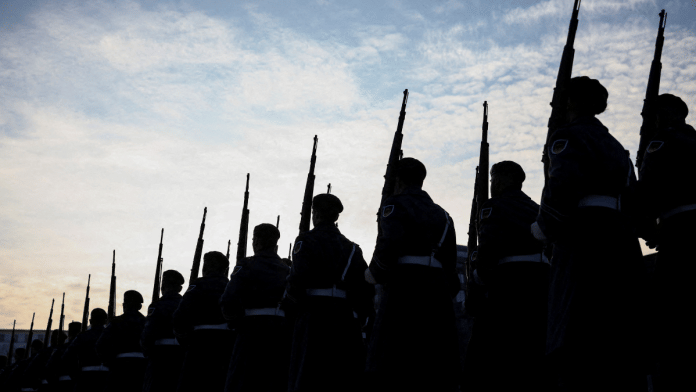New Delhi: The global defence spending in 2024 stood at $2.46 trillion, according to the latest data published by International Institute of Strategic Studies (IISS)—up from $2.24 trillion the year before.
The layout increased to an average of 1.9 percent of the world’s GDP, reflecting the heightened security challenges.
The hike in spending was marked by deteriorating security environments and sharpened threat perceptions in regions such as Europe, Middle East and North Africa (MENA), and Asia. The only region that did not have real-term increases was Sub-Saharan Africa, which in fact saw a decline by 3.7 percent.
The US, China and Russia were the top three countries with the largest defence budgets. The US set aside the most, at $968 billion. China budgeted $235 billion, while Russia allocated $145.9 billion.
Between 2023 and 2024, Russia’s total military expenditure grew 41.9 percent in real terms. The Indian defence budget stood at $74.4 billion.
Spending jump in Europe due to Russia
Over the past year, European defence spending jumped by 11.7 percent in real terms to reach $457 billion, with 2024 marking the tenth consecutive year of growth.
According to the report, Russia’s 2014 invasion of Crimea elevated threat perceptions across the continent and rejuvenated long-standing commitments from NATO members to spend two percent of GDP on defence. Regional growth in 2024 was dominated by the 23.2 percent real uplift in the German defence budget.
Defence budgets in other European countries, such as Poland, also grew significantly. The country became the 15th largest defence spender in 2024—up from 20th place in 2022. European growth, however, remained outpaced by Russia’s increase in its total military expenditure.
The report said that since Russia’s full-scale invasion of Ukraine began in February 2022, European states accelerated their modernisation efforts. This has created opportunities for companies outside of Europe, as well as traditional US suppliers. This is to fast-track procurement or produce equipment that few or no European companies currently can, such as multiple-rocket launchers (MRLs).
Benefitting from this trend, from February 2022 to the end of October 2024, South Korean companies secured production contracts worth $18.03 billion from European states. Most of this sum, $16.88 billion, was contracted by Poland, which sought to rapidly modernise and expand the size of its armed forces.
Also read: Designed for assisting fighter aircraft, HAL CATS likely to take first flight by year end
China, North Korea push up Asia budget
Asian defence budgets continued to grow at a moderate pace in 2024, in consonance with their trajectory over the last decade.
This continuity persisted mainly due to China’s military modernisation and increasing assertiveness. In addition, North Korea’s advancing nuclear weapons programme also tended to “galvanise threat perceptions in the region”.
Countries such as Japan and Indonesia saw an increased spending in the region.
In global terms, stronger uplifts in other regions meant that Asia’s regional share of global spending fell to 21.7 percent in 2024 from 25.9 percent in 2021.
Spending in the MENA region surged after 2021 and accelerated even further in 2024 as the Israel-Hamas war intensified and spread. According to the report, the budgetary revisions are becoming increasingly common and more dramatic than in past annual budget cycles.
“While this is a strong indicator of countries’ levels of concern, such measures also create volatility and a lack of transparency,” the report read.
(Edited by Tikli Basu)
Also read: Defence budget in 2025 increases by 9.52% but devil is in the details






